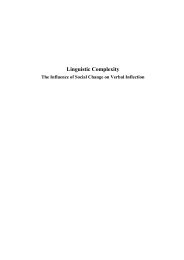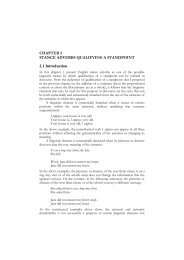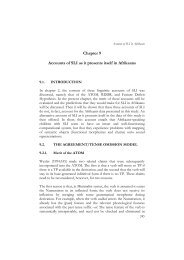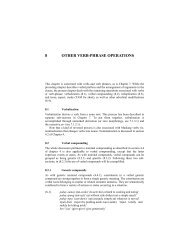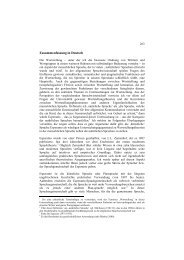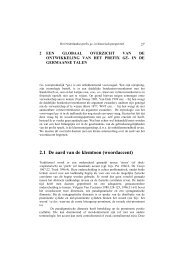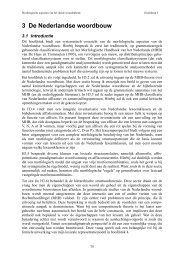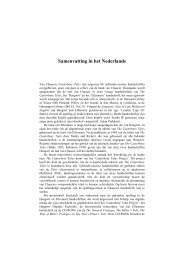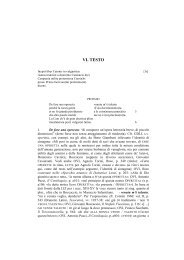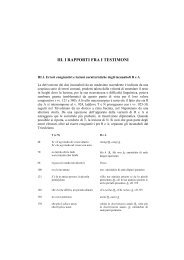Linking elements in compounds - LOT publications
Linking elements in compounds - LOT publications
Linking elements in compounds - LOT publications
Create successful ePaper yourself
Turn your PDF publications into a flip-book with our unique Google optimized e-Paper software.
INTRODUCTION<br />
differ <strong>in</strong> detail, they both consider derivational and <strong>in</strong>flectional processes of a<br />
language to be organized at different levels. A simplified schema of these<br />
theories (P<strong>in</strong>ker, 1999, p. 180) is presented <strong>in</strong> Figure 1.<br />
Memorized<br />
roots (<strong>in</strong>cl.<br />
irregulars)<br />
Figure 1. A simplified schema of morphology based on Kiparsky (P<strong>in</strong>ker, 1999,<br />
p. 180).<br />
P<strong>in</strong>ker (1999) assumes that irregular forms are stored as a whole <strong>in</strong> the mental<br />
lexicon, while regular forms are created by rules. The level-order<strong>in</strong>g hypothesis<br />
(Kiparsky, 1982) and the words-and-rules theory (e.g., Berent & P<strong>in</strong>ker, 2007,<br />
2008; P<strong>in</strong>ker, 1999) predict that irregular words like mice are available as <strong>in</strong>put<br />
for <strong>compounds</strong> (e.g., mice-eater), while regular forms like rats are not (*rats-eater,<br />
see Figure 1). This thesis will present new data based on Dutch <strong>compounds</strong><br />
that may falsify the hypothesis that word formation is constra<strong>in</strong>ed by regular<br />
<strong>in</strong>flection.<br />
Complex<br />
word<br />
formation<br />
1.2 Aims and outl<strong>in</strong>e of the thesis<br />
Regular<br />
<strong>in</strong>flection<br />
Syntax<br />
The ma<strong>in</strong> aim of this thesis is to <strong>in</strong>vestigate whether speakers of Dutch<br />
<strong>in</strong>terpret Dutch modifiers with l<strong>in</strong>k<strong>in</strong>g en <strong>in</strong> spoken <strong>compounds</strong> as plural forms.<br />
It elaborates on the <strong>in</strong>fluence of form variation on numerosity. A substantial<br />
amount of variation can be found <strong>in</strong> the occurrence of a l<strong>in</strong>k<strong>in</strong>g element <strong>in</strong><br />
Dutch <strong>compounds</strong>. Some <strong>compounds</strong> occur with and without a l<strong>in</strong>k<strong>in</strong>g<br />
element, like bloem+bak and bloem+en+bak (‗flower box‘). Form variation may<br />
also occur <strong>in</strong> Dutch dialects, for example appel+e+boum (‗apple tree‘) with<br />
l<strong>in</strong>k<strong>in</strong>g [ǝ] <strong>in</strong> the Limburg dialect, versus appel+boom (‗apple tree‘) without<br />
l<strong>in</strong>k<strong>in</strong>g element <strong>in</strong> standard Dutch. Perceived numerosity of a compound‘s<br />
19



